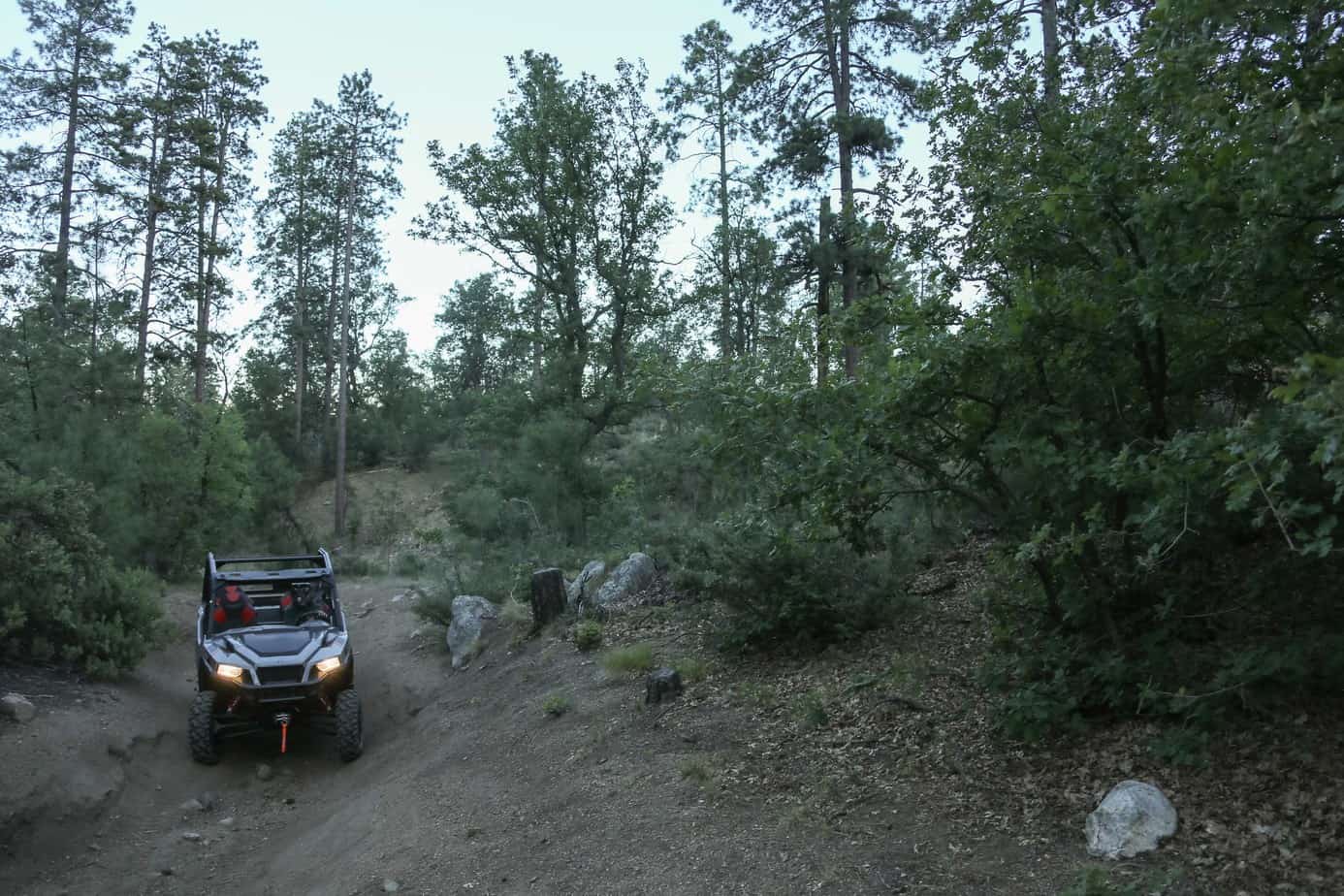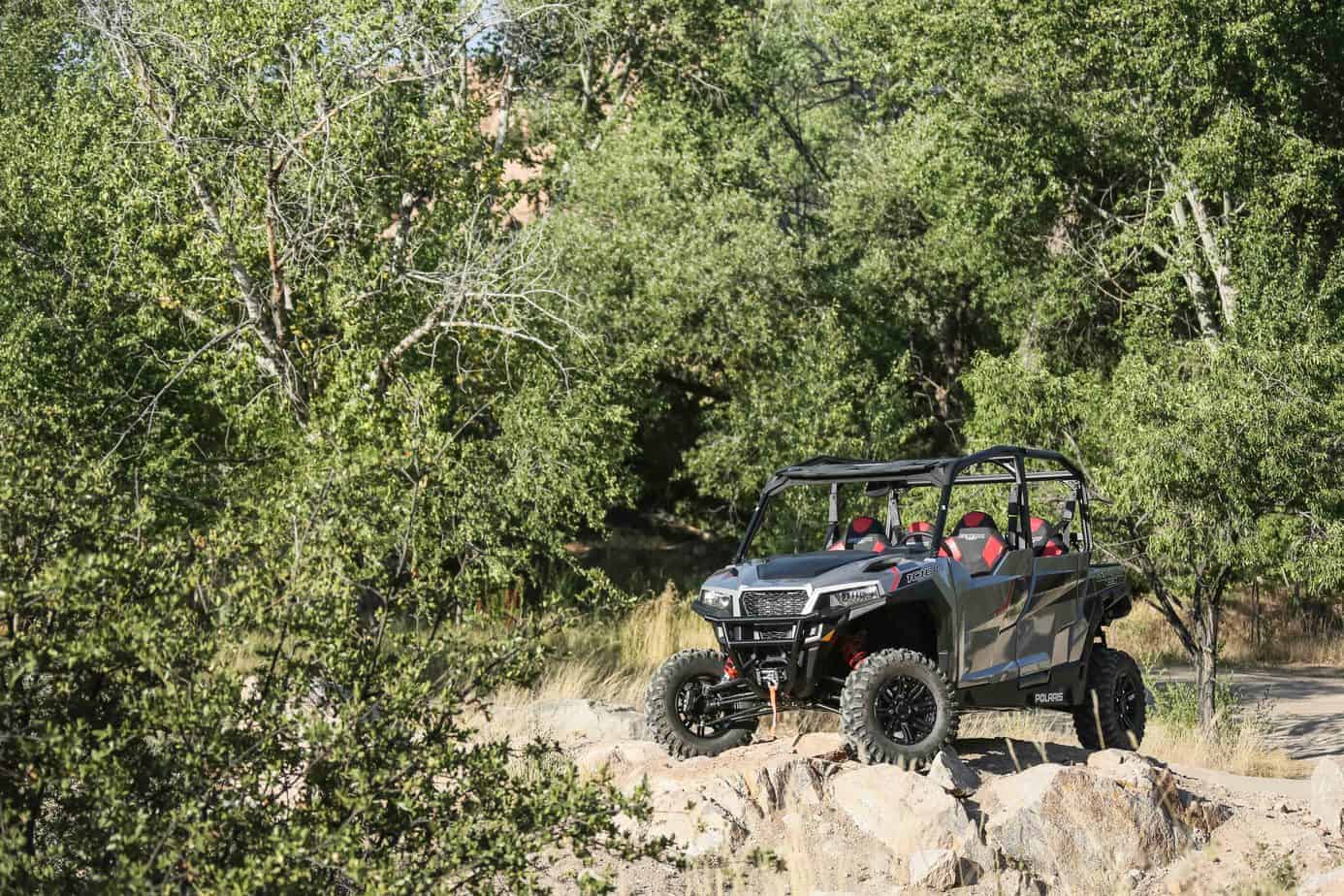We all daydream about the perfect travel vehicle, something simple and easily repairable; light, yet extremely capable. The checklist continues with room for four passengers and a payload for carrying camping equipment, tools, and recovery gear. Performance is also important, so we look for vehicles with excellent ground clearance, locking differentials, long-travel suspension, and low-range. Of course, we also want the machine to be a good value.
I suspect that few of us have considered a UTV for camping and overlanding, but the reality of real-world specification dictates otherwise. A vehicle like the Polaris General is not only fun to drive, it even comes with a winch and more capability than any factory vehicle shy of a Jeep Rubicon. And just to jam the nail in a little further, the General has 200 pounds MORE payload than the Wrangler. Now, I am certainly not suggesting that a UTV is the right vehicle to drive to Panama (it is not road legal in most countries), but in a state like Arizona, the Polaris can be made street legal and can easily cruise at highway speeds. This means that most long weekend 4WD trips and camping excursions can be completed in a machine that costs $20,000—brand new.

At Expedition Portal, we have all but avoided reviewing or adventuring in UTVs because of a few inherent limitations. In the past, these units were not street legal and the ones with good payload were horribly slow (and uncomfortable). With the launch of the General line and recent MVD regulatory changes, we now have a 4-door unit to evaluate, and it is plated, registered, and insured for road use. The General also provides significant improvement in passenger comfort and safety, while also increasing payload and performance. Another concern we have had with early UTVs is that they were more fun toys than exploration tools, which meant the potential for lots of speed on the trails, sometimes at the hands of inexperienced drivers (yes, most people think they know how to drive). This at times resulted in trail damage and lack of concern for other trail users. However, this seems to be improving with units that are larger (and more expensive) and have additional passenger capacity. The future of the UTV is really only limited by the behavior of the users—but that is a topic for another article.

On the Trail
Off-highway, the General is an impressive machine, boasting 12 inches of ground clearance, 12.25 inches of front suspension travel, and 13.2 inches of rear travel. The belt-driven, variable transmission includes both a high-range and low-range gear set, allowing for short stints at highway speeds (we tested it up to 65 mph) and low speed technical work. It is important to note that the CVT cannot be “crawled” like a traditional automatic with torque converter, so left-foot braking and slightly higher rpms (and speed) are needed to protect the belt. The tires are 27 inches in diameter and the wheel opening should easily accommodate up to a 31-inch tire. The wheelbase is 113 inches, only a few shy of the Wrangler Rubicon, providing stable handling and excellent hill climbing.

The width and overall length is tidy, allowing the General to fit between trees and rocks that a standard 4WD would need to negotiate. It has a rear locking differential and a front hilliard-style locker which uses a cage with rollers and a magnetic coil that engages the axles automatically. When combined with the aggressive tires, the Polaris becomes exceedingly capable, besting nearly every stock 4WD we have ever tested on our evaluation loop. There are a few notable limitations, principally the firm anti-sway bars, which constrains articulation in cross-axle terrain. This causes a corner of the General to lift, often dramatically, thus reducing stability and traction, although it is rarely a real concern given the low center of gravity. Trail prowess is genuinely exceptional, and when combined with excellent ride quality, it is easy to see long days in the dirt and equally wide grins.
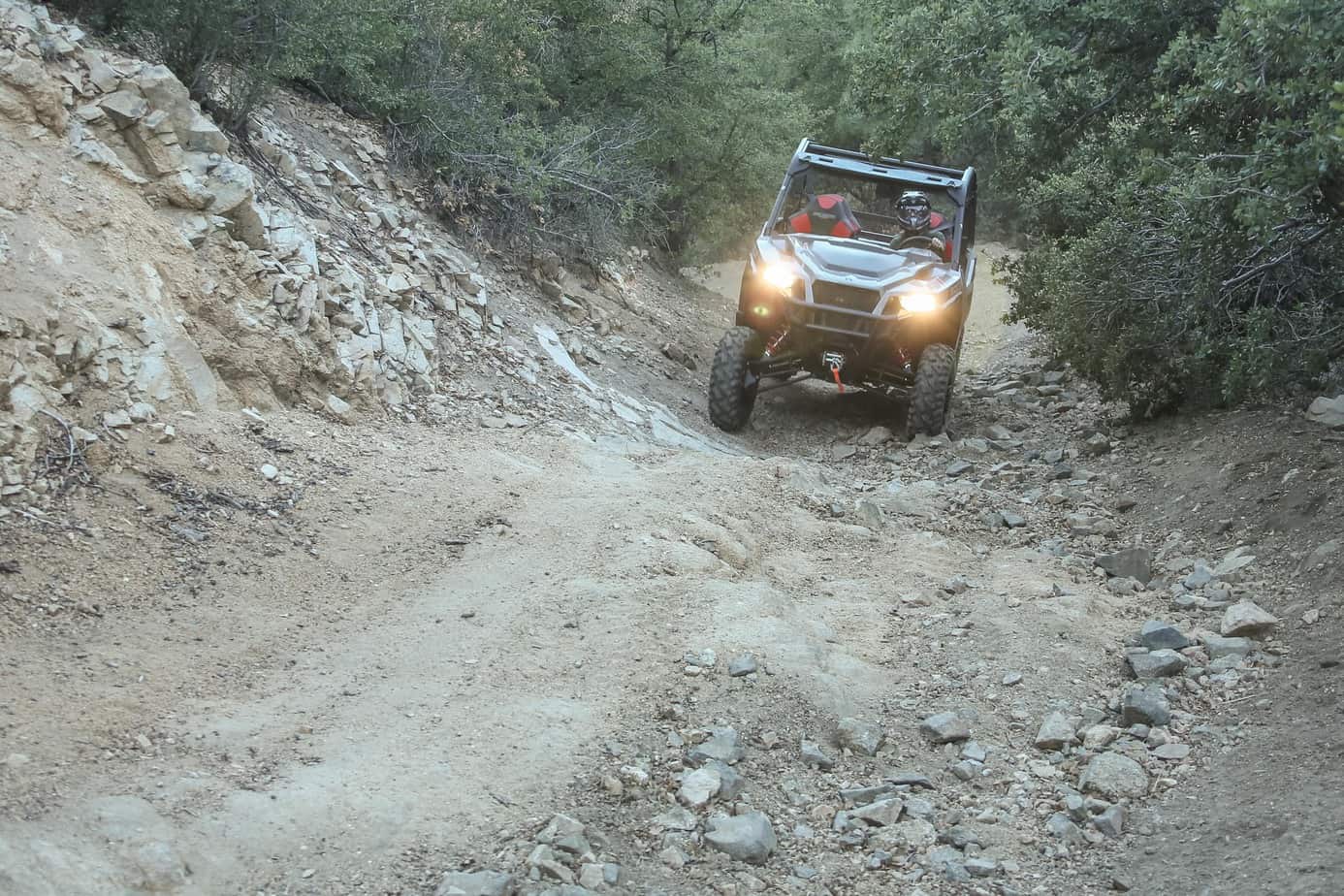
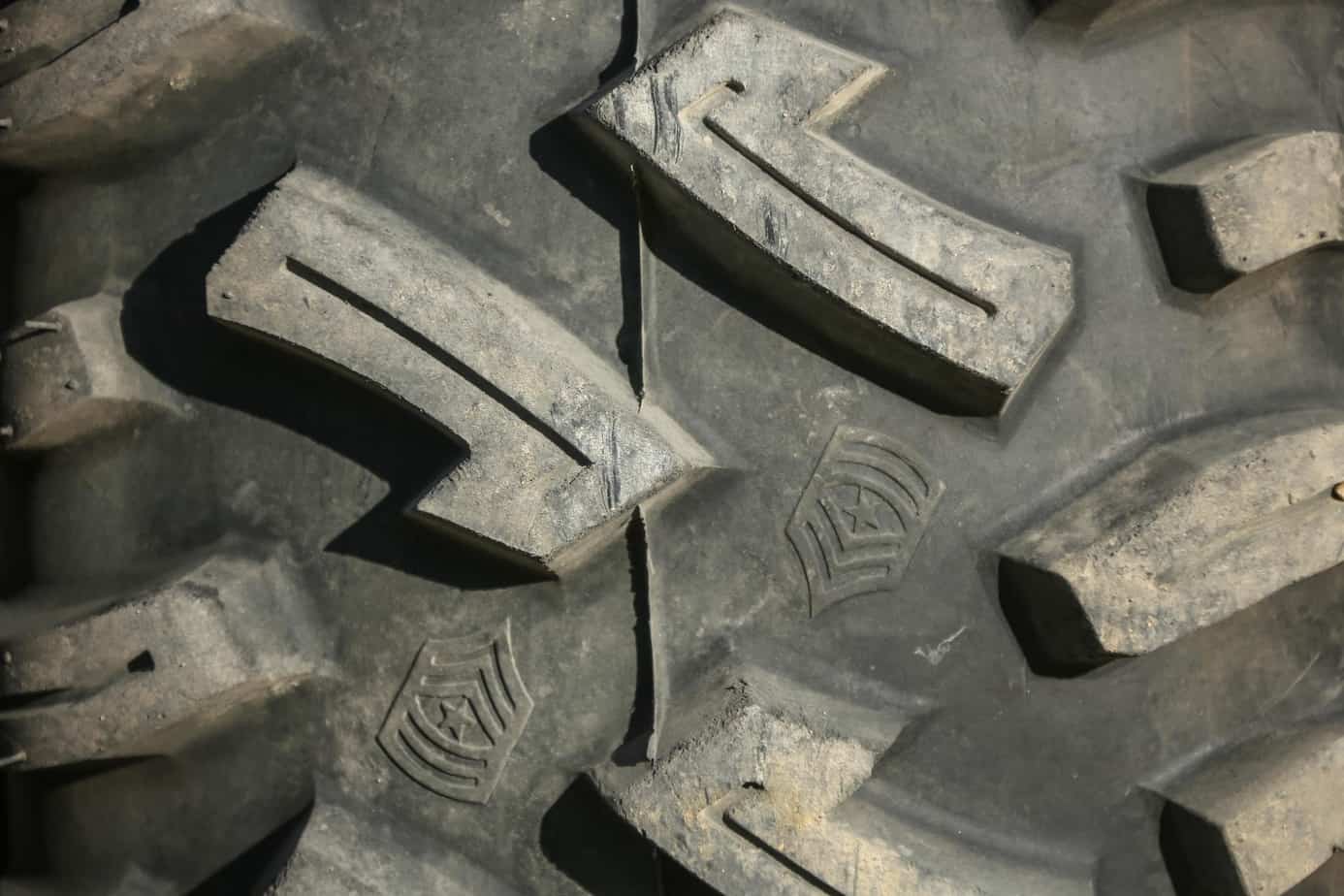
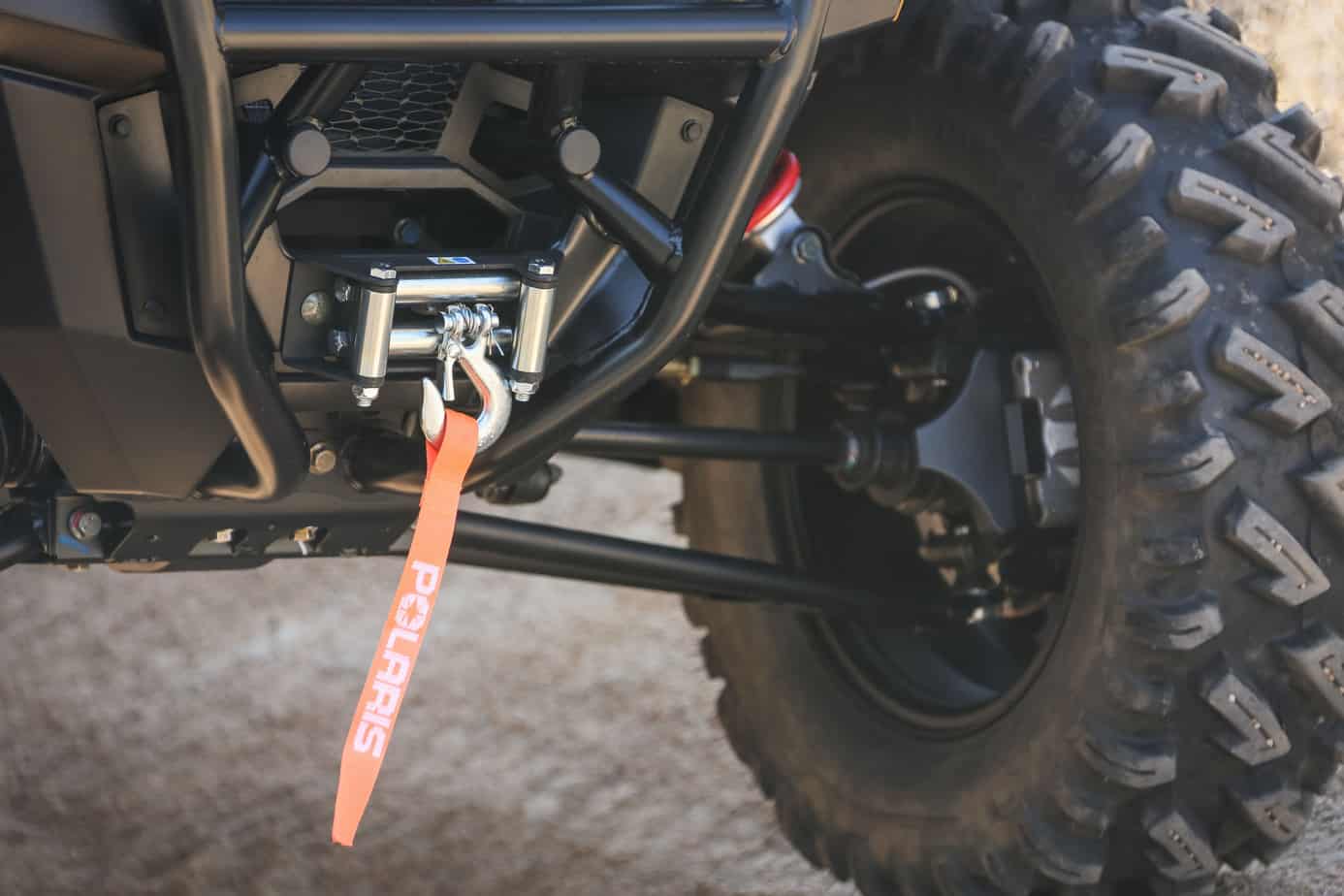
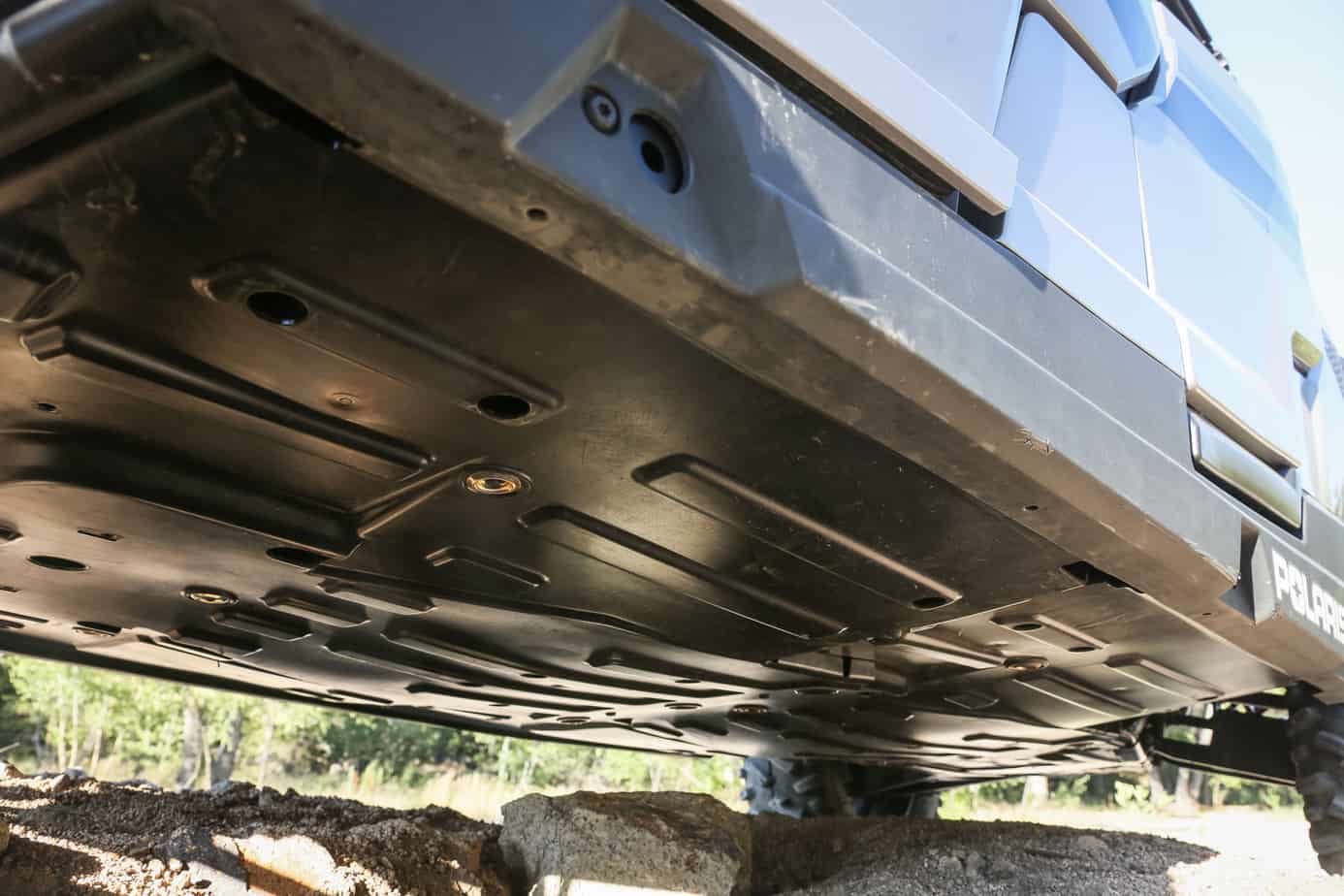
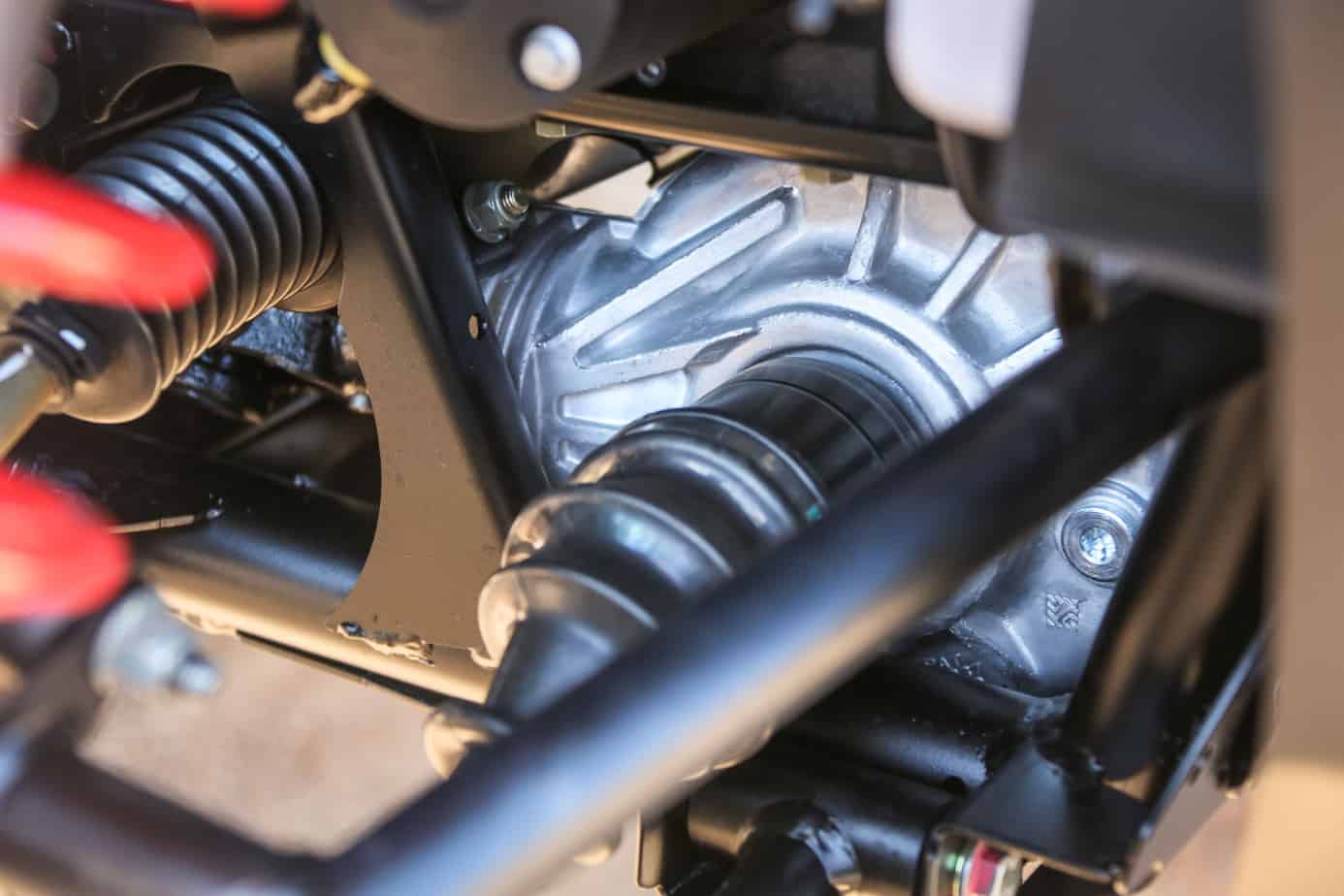
As an “Overlander”
When considered for a travel vehicle, the concept of a UTV genuinely gets interesting. Some will say that the bed is too small, but the General has way more capacity than the saddlebags on my Adventure Motorcycle, and it is easy to ride around the world or camp off the moto. So, in reality, all this space and payload is a bonus. And speaking of payload, the General actually has more capacity than a Jeep Wrangler (200 pounds more) and is equal to the Tacoma in some configurations. The rear coil-overs are also adjustable, so it would be simple to set preload to maintain ride height. My one concern would be about putting too much of the equipment in the bed, as it would be easy to negatively impact the (good) center of gravity. It would be important to put water in the rear footwells for example and be careful about overall weight distribution.
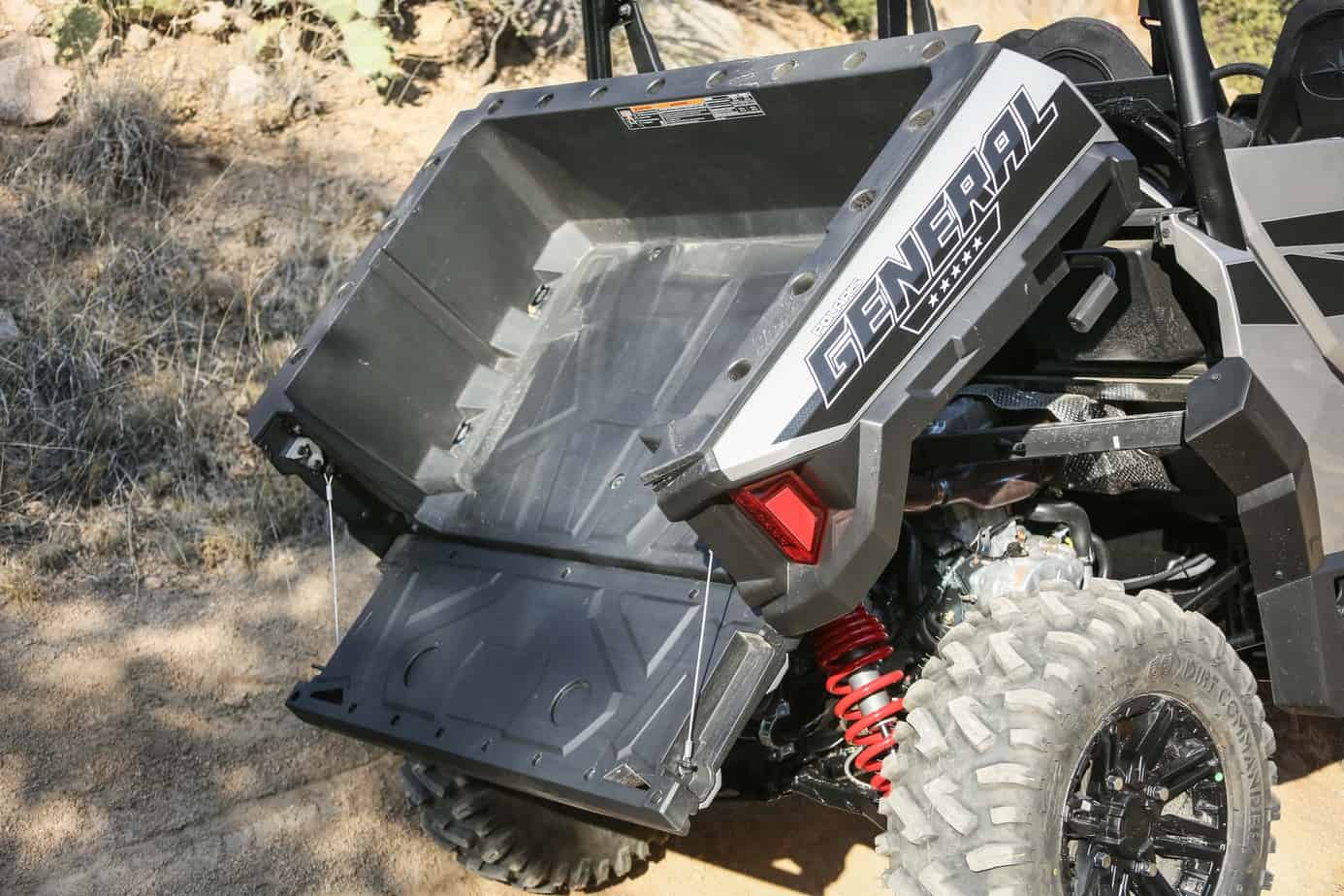
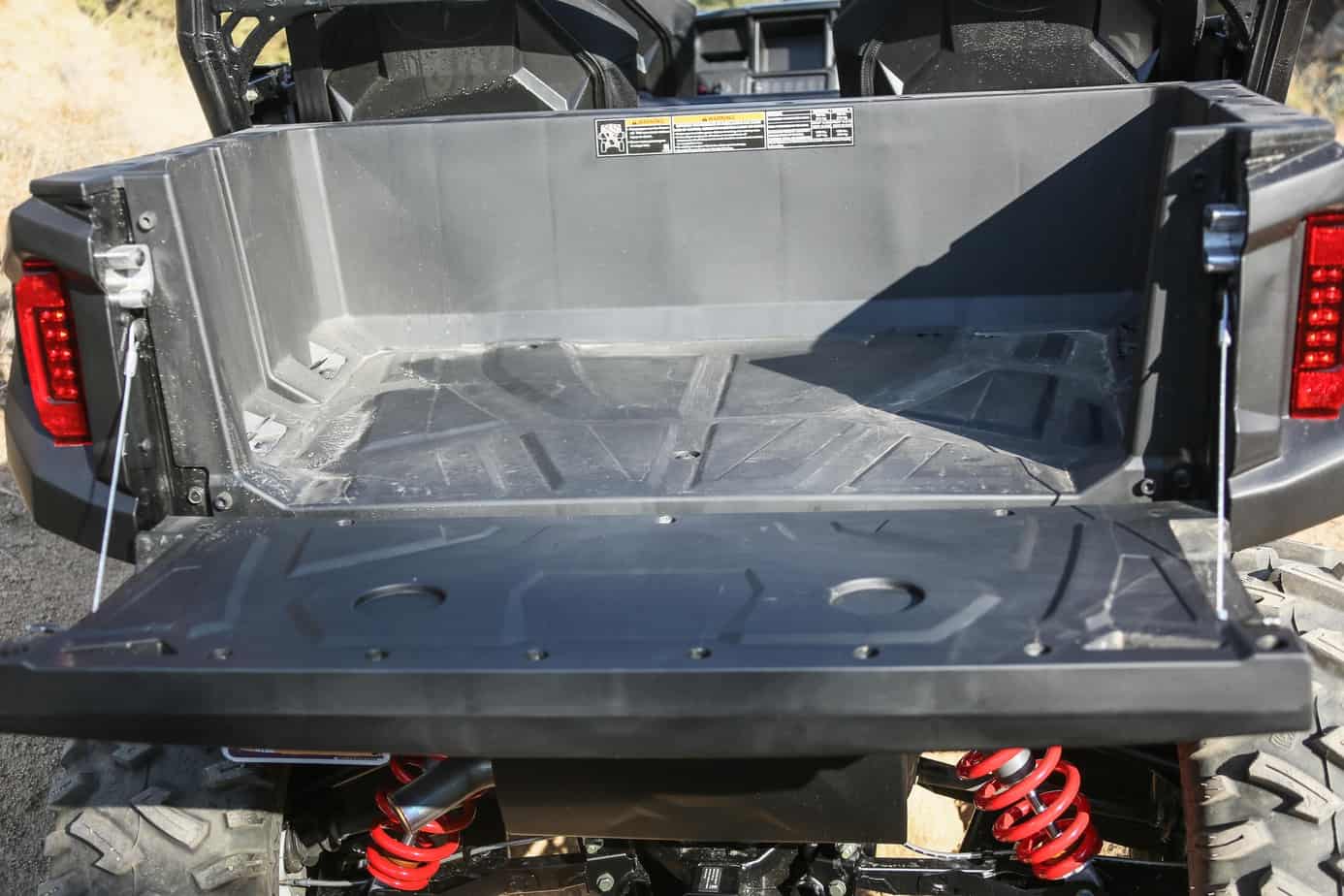
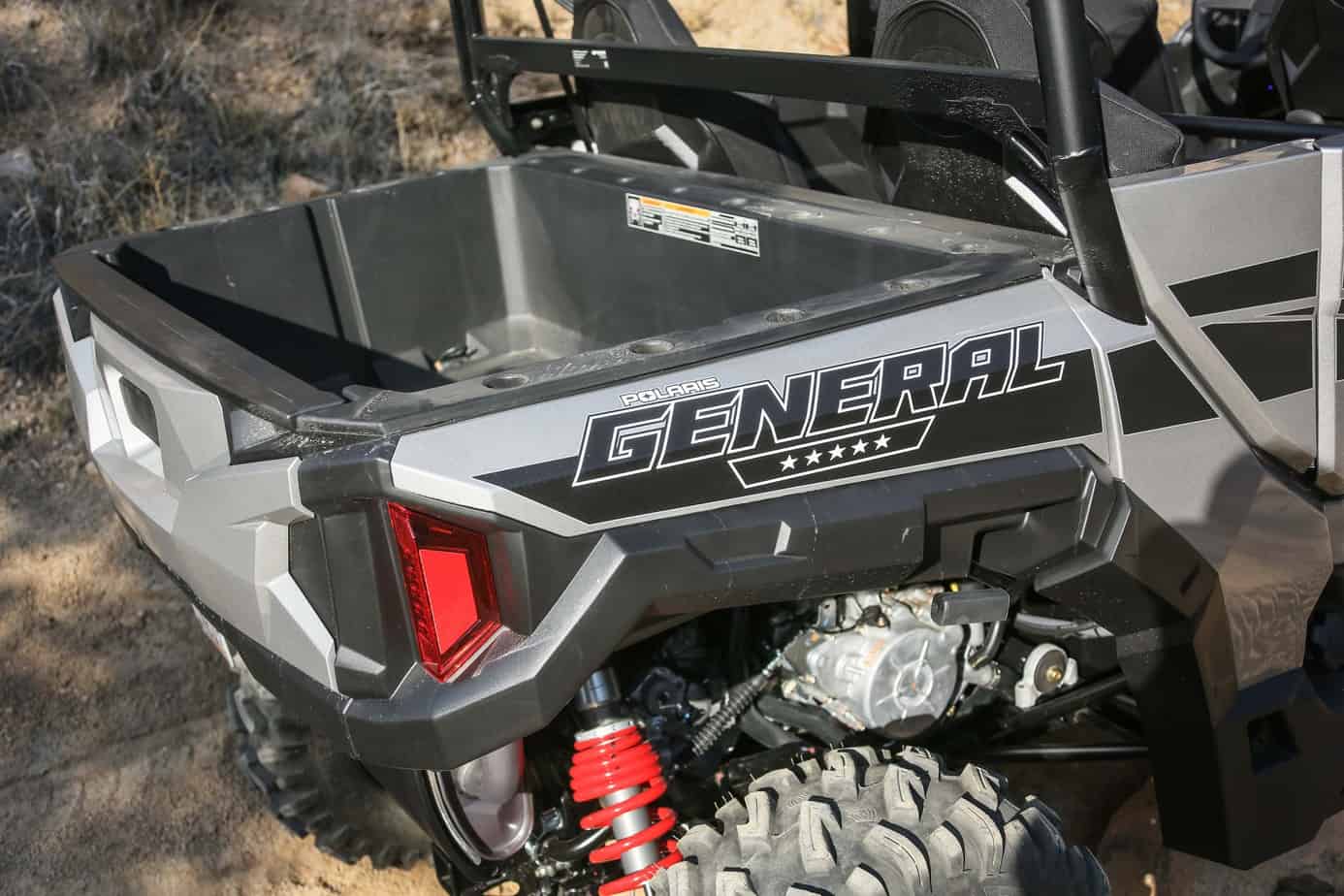

Even after only a few minutes of crawling around the General, I already had visions of how to set up the systems and organize the gear. Good bags and boxes would be critical to fight dust ingress, but even a fridge could be mounted in place of one of the rear seats—a 12-volt outlet is right in the center console. For fun, I put all of my motorcycle camping gear in only the rear seats alone and even had plenty of space for a table and chairs. There is no question one could camp for weeks out of this thing.
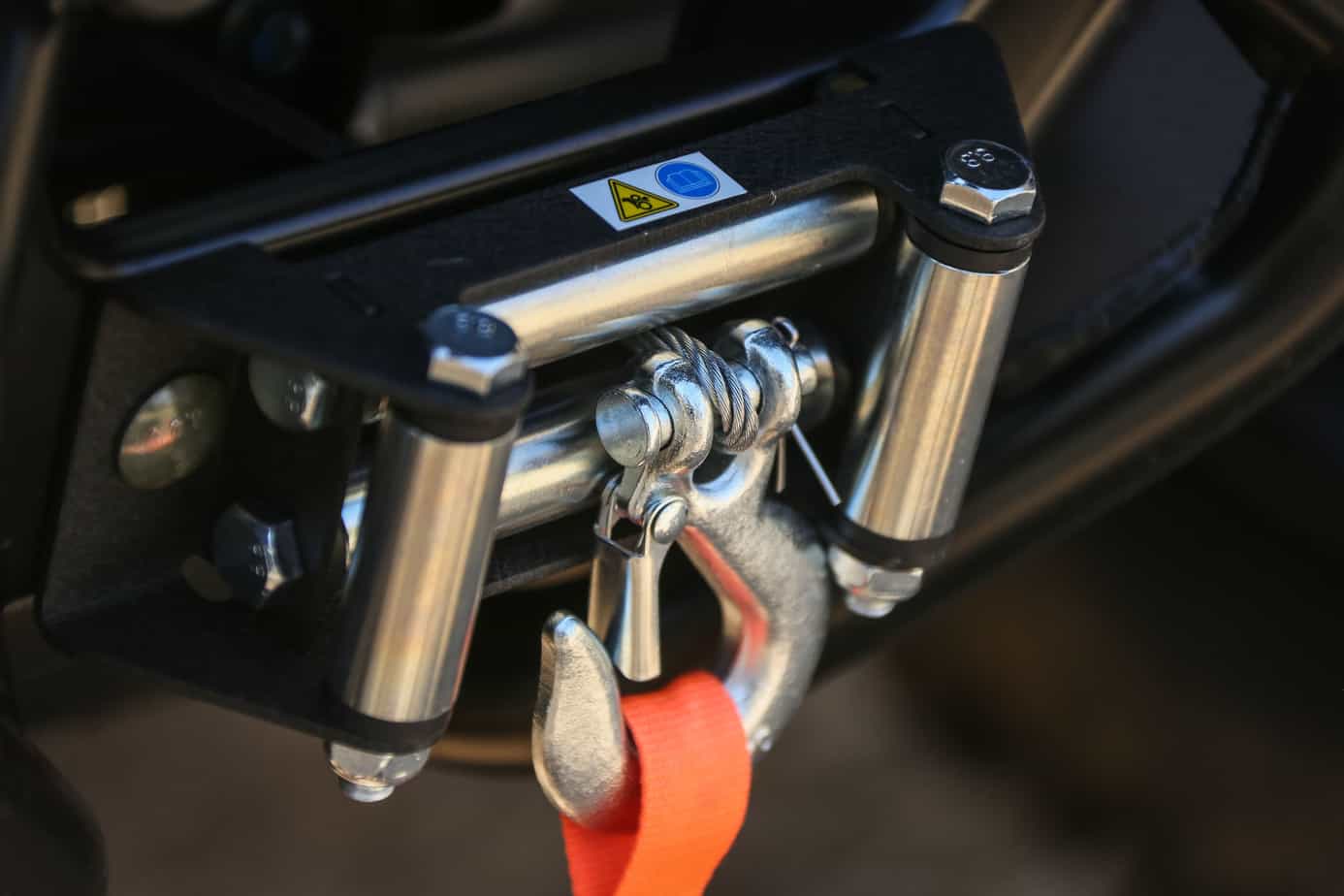
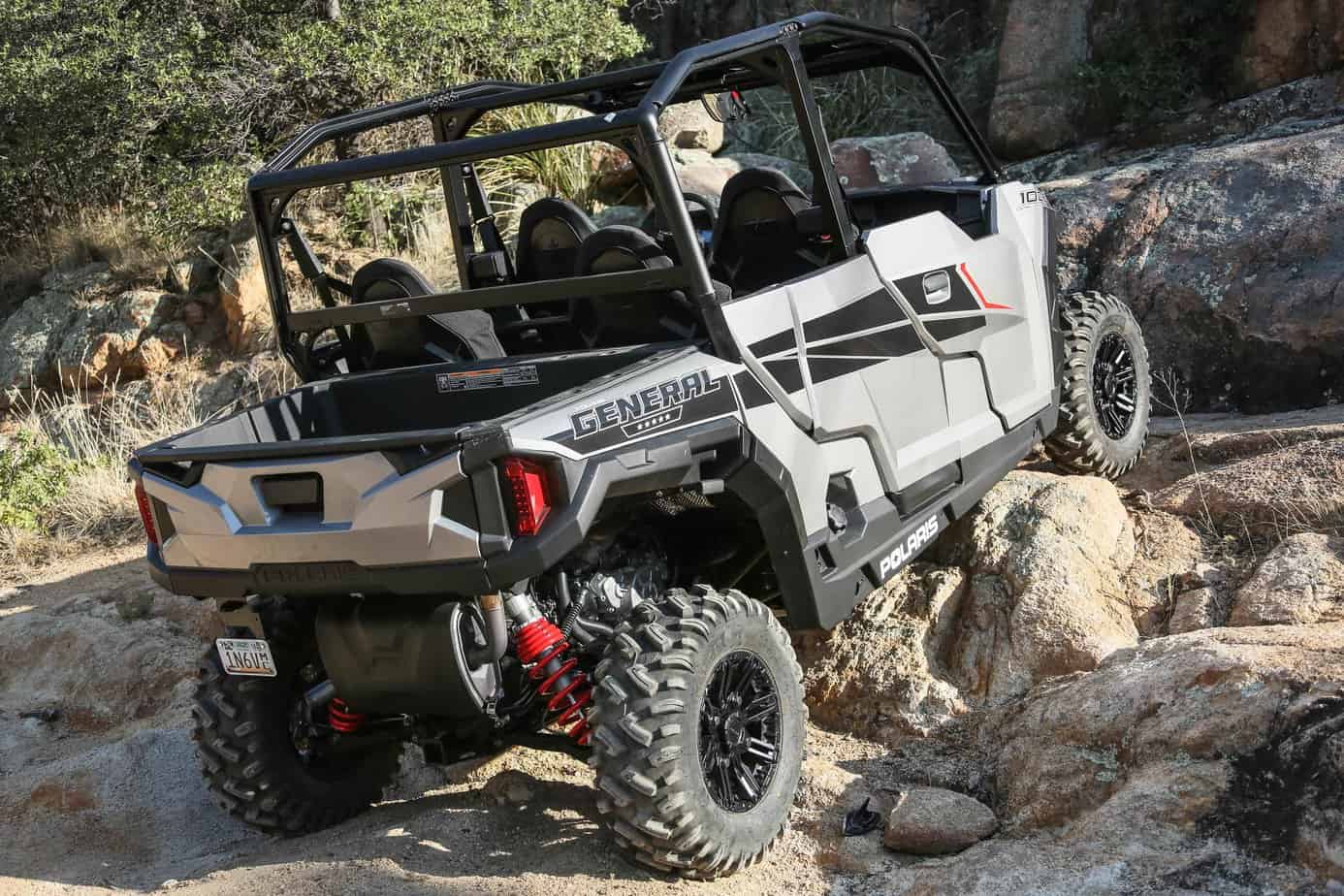
One other consideration is weather; as travelers we are constantly encountering changes in conditions, from extreme heat, to rain, or even snow. Fortunately, there are aftermarket solutions that provide a fully enclosed cab and even a heater system for that trip up the frozen MacKenzie River. However, I really come back to the simplicity of it and the motorcycle analogy. Just bring good riding gear and it won’t matter the weather. I do think a few accessories are warranted, particularly the full length roof and a glass windshield. Can you take a Polaris around the world? Sure, but the service intervals and road legalities will slow the progress. Where the General really shines is as a weekend escape vehicle.
Conclusions
The General is fun and certainly capable. Even when compared with popular overland platforms, it is also surprisingly appropriate for longer dirt forays. For us at Expedition Portal, the one nagging concern that remains is the behavior of a small percentage of UTV owners on the trails. Most forest roads have a 25-mph speed limit, something I see abandoned by many UTV drivers. There are hikers, bikers, and wildlife everywhere in the backcountry, so aggressive driving and a degrading reputation of the user group could ultimately get these machines banned. So, is the General a legitimate travel adventure platform? Absolutely! My hope is that responsible use continues to permeate the culture, and as more people use them for exploring (not wannabe desert racing on public roads), the future of the UTV will be bright. We are excited to load up the camping gear and head out to the woods—look for reports on installing a few accessories and our first weekend adventures.
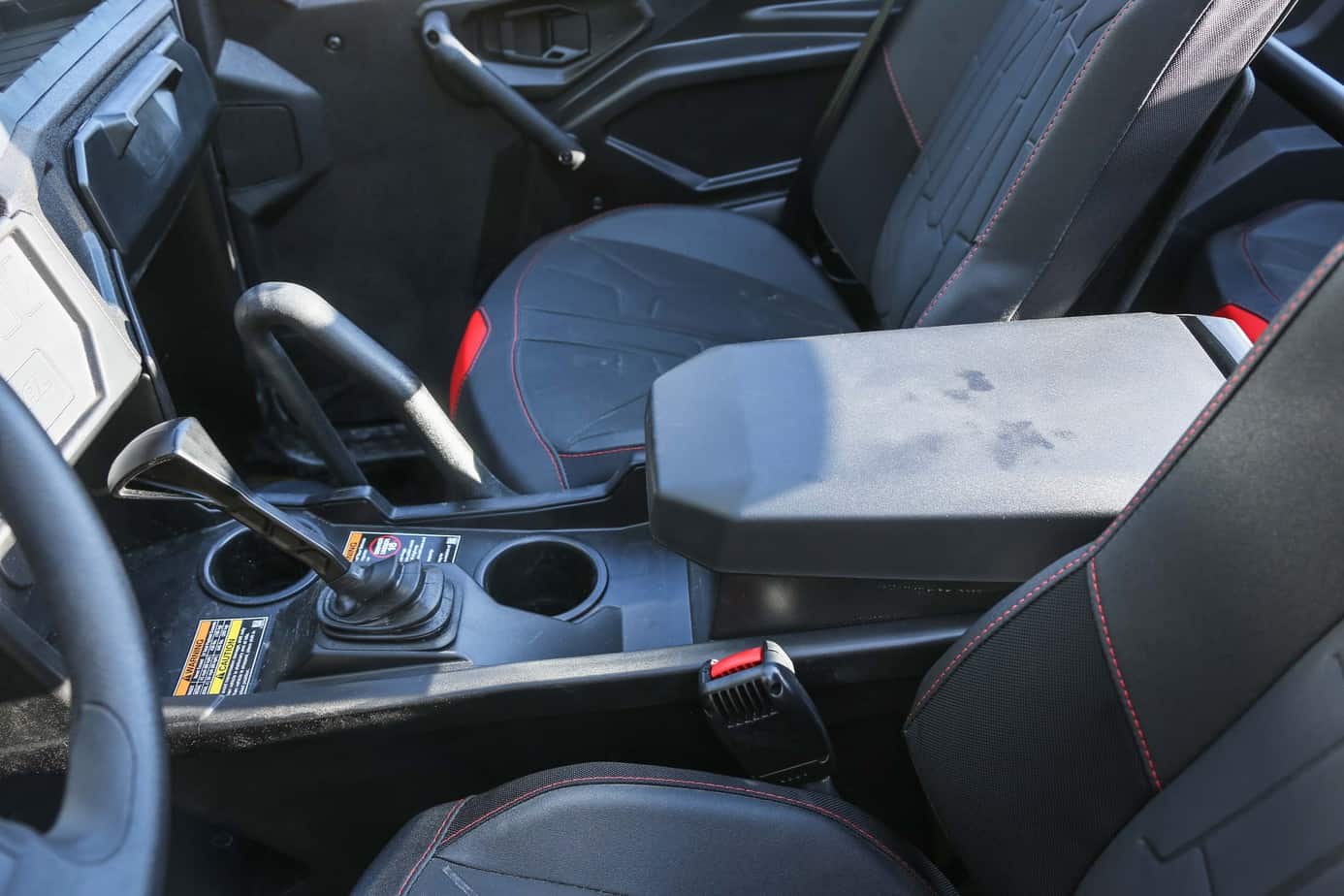
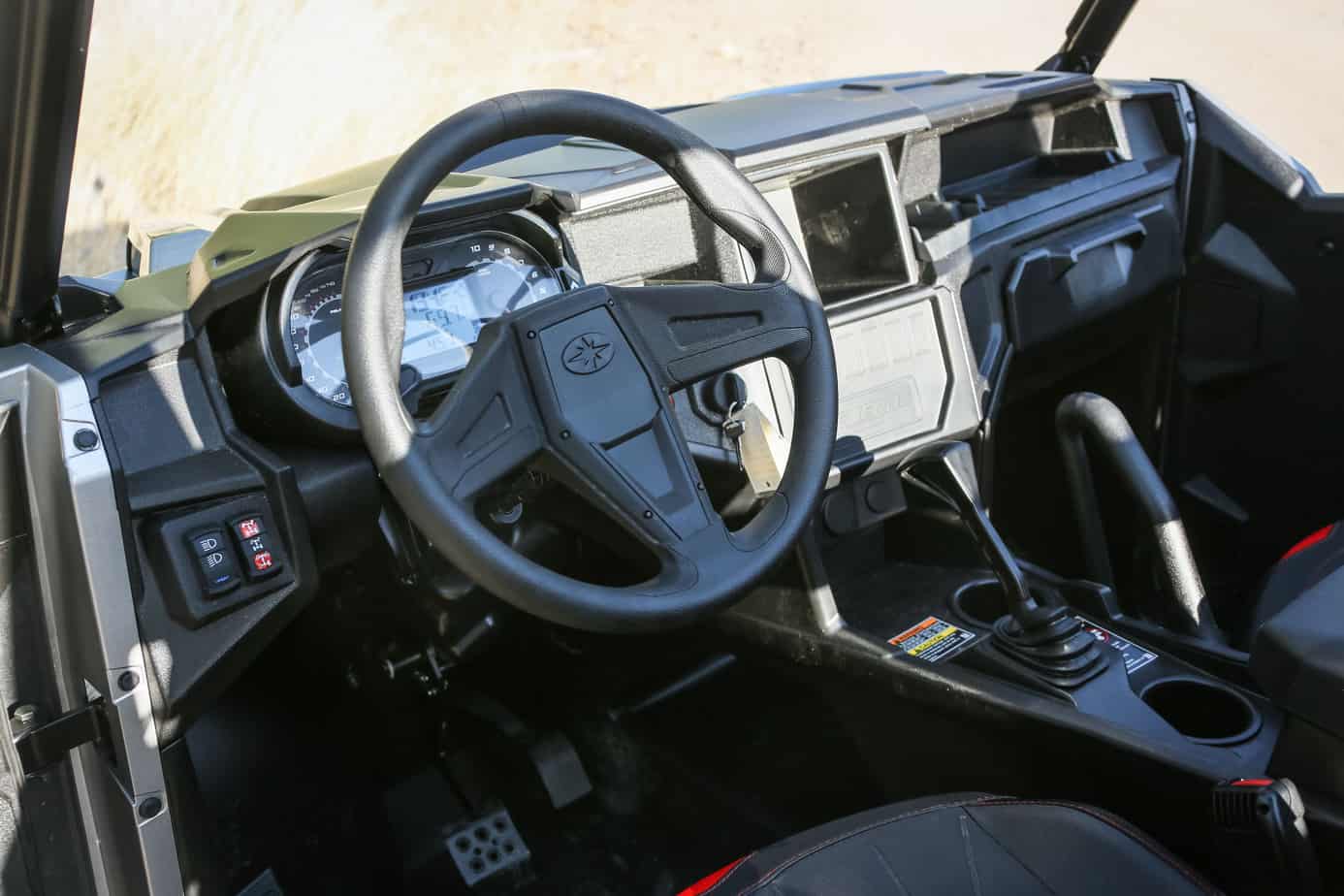
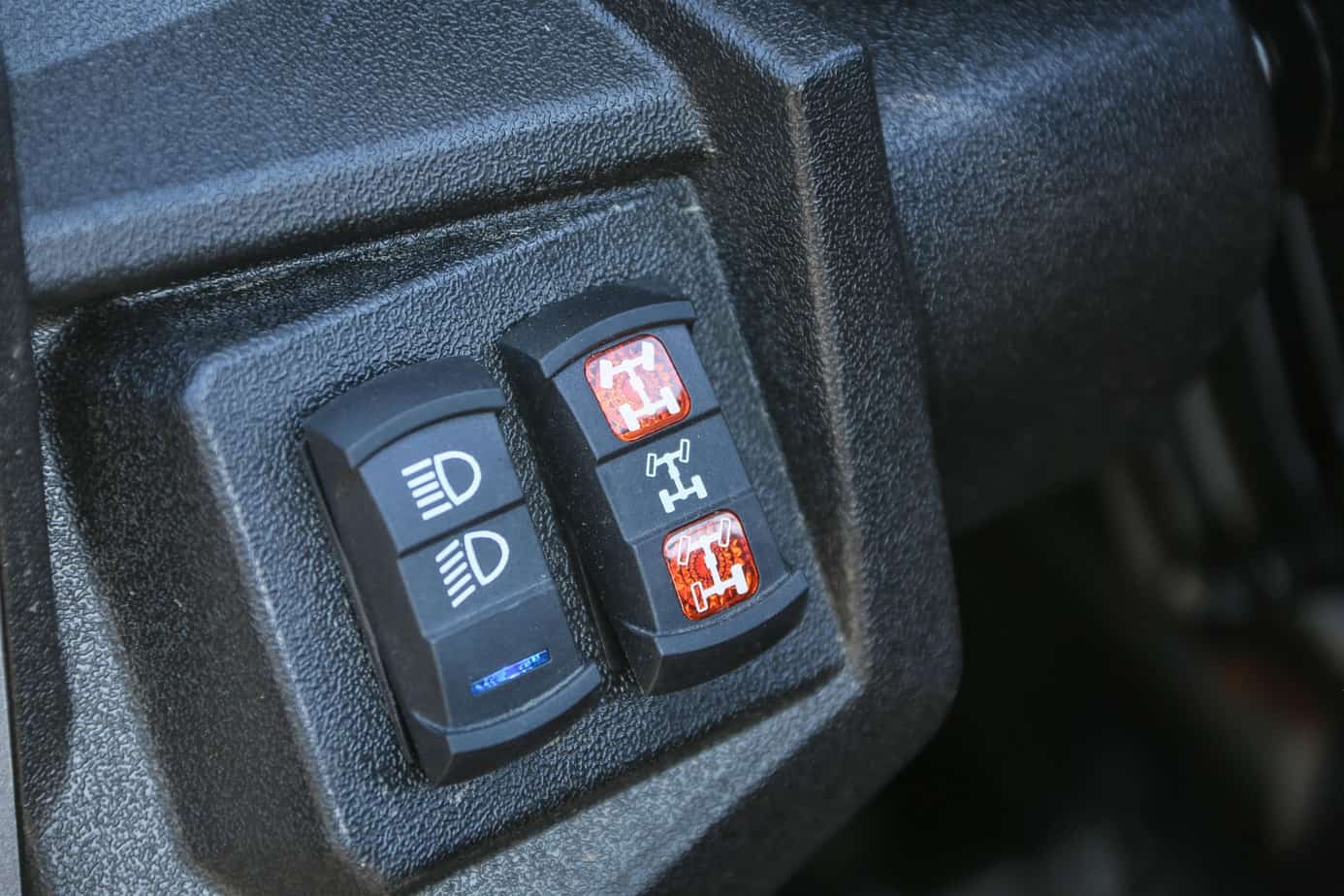
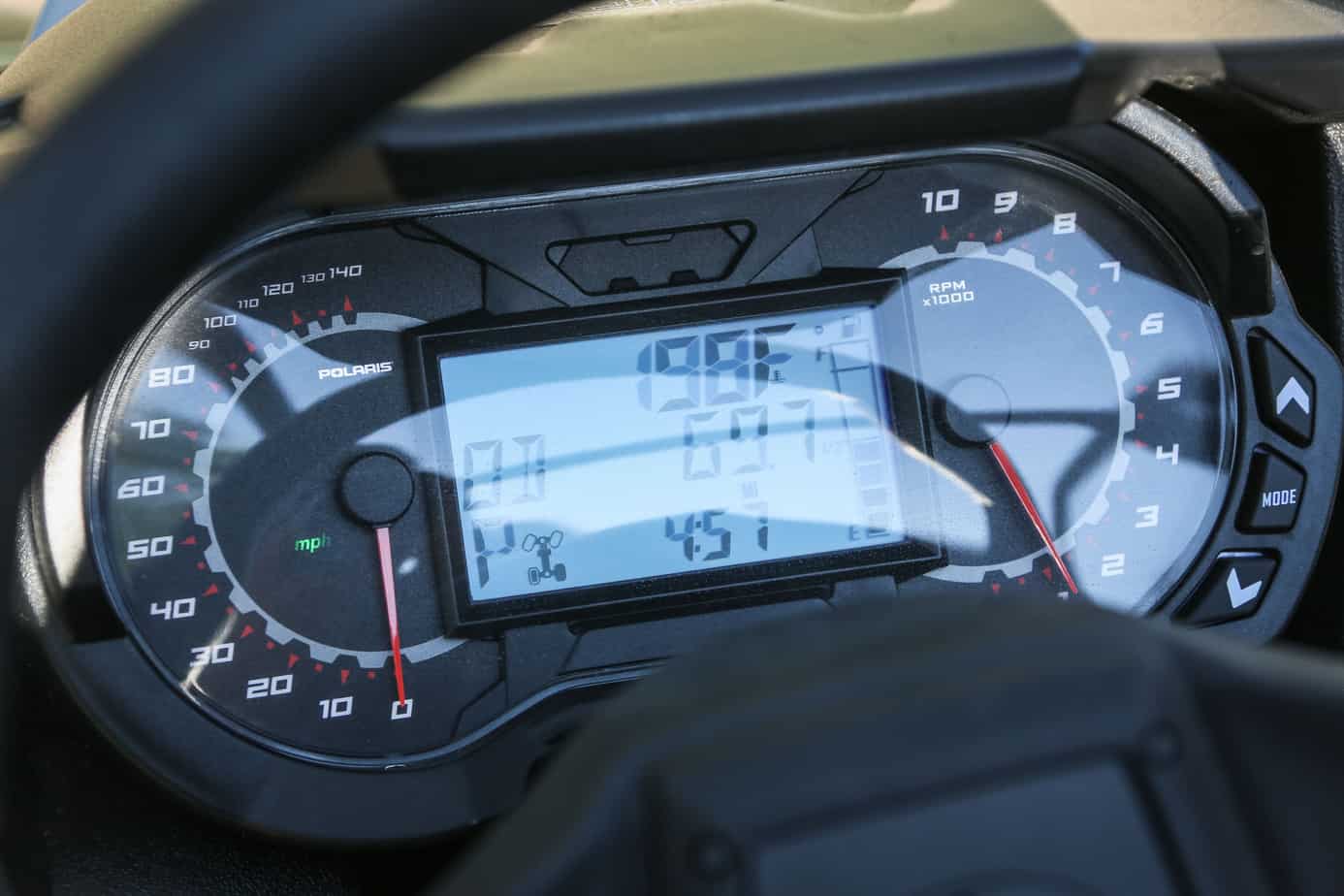
Editor’s Note:
Expedition Portal strictly ascribes to a Tread Lightly and Leave No Trace ethos. Respect other users of public lands by driving at or below speed limits and minimize dust and wheelspin. Use 4WD and lower tire pressures to limit trail damage. The future of mechanized trail access depends on responsible use.
